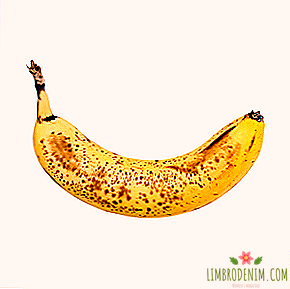Mass market and haute couture: 10 ethical brands
Continuing the conversation about ethical fashion,We have collected 10 bright brands that make things not only green but also cool. It's no secret that few people are ready to buy clothes simply because they are made according to all the rules of ethical production: in order to become a real object of desire, a thing must be beautiful and really please the buyer. And since all people have different tastes, there are a lot of ethical brands so that the movement of responsible consumption can become really massive, and they have to offer the same diverse range of products as their "irresponsible" colleagues. In our today's selection of collected a variety of brands - they differ in range, and prices, and in their approach to design.
RCR Khomenko
Yasya Khomenko is the main heroine of the ethical fashion in Ukraine: her name appears regularly in local fashion magazines and even in foreign versions of Vogue. It represents one of the most unusual areas - upsikeling, that is, the creation of new things from old ones. Clothes, furniture upholstery, and curtains are used, all you can find when you go hiking in second-hand, flea markets and vintage shops. After such a summary, it would be possible to present something at least very specific, but the RCR Khomenko things, if you hang them with others that are not related to second-hand and upsikling, will not stand out. Is that profitable - they are bright, catchy and very geometric, in colorful artistic prints.
Nevertheless, the attitude to the upsikeling both in Ukraine and in Russia among the clients is still mixed: many people are confused by the idea that someone else wore the proposed clothes, and in this case several different people at once. “I was often embarrassed to admit to customers,” says the designer, “that their elegant cocktail dress was sewn from a pillowcase, on which we laid patterns for three hours yesterday in order to circumvent all the spots.”
For Yasi herself, the search for forgotten treasures has been a part of life since childhood: "It was more important than common breakfasts and dinners - to go to the Senna Market on Saturday and rummage in heaps. Probably, this is why everything new causes internal dissonance in me. I found it so a mighty inspiring force that is difficult to convey in words. I was in the hands of phenomenal fabrics - with hand-embroidered Panamanian terrorists, with a print of "every creature a pair," with distorted icons. "
Due to very clear circumstances, production for RCR Khomenko is practically impossible and many things exist in a single copy. But the plans of Yasi and her associates are the creation of a new, conscious mass market. The first step was the project #theshirtproject, which the designer is engaged with Natasha Isupova. Together they convert 50-60 men's shirts a month, turning them into women's blouses.
GO
GO Oli Glagoleva became the first eco-label in Russia, combining an ethical approach with a truly fashionable one. Although things in different collections can be made from recycled plastic bottles, then from old plaids, they look very vital and practical, and are made as skillfully as possible. For example, in collaboration with artist Liza Smirnovoy, from shirts to waffle towels dresses (sounds scary, but it looks completely wrong: by the word "recyclables" we all have to learn to treat calmly) - not only artistically sprayed drops of paint were covered, but also complex, hand-made embroidery. The brand's team could work on one item for up to 100 hours - so what we are talking about here is not only towels and apsykling, but also a couture approach.
Olya Glagoleva produces her collections in collaboration with various people and organizations who only share her values. So far there have been only three of them. The first is with a photographer and artist Dmitry Pirozhnikov. It was a small “capsule” of 5 models of organic cotton shirts with prints hand-printed on the fabric - mermaids, swimmers and people relaxing in funny bright swimming trunks. The second is "The Artist at Home", with Liza Smirnova. The third is "House", released with the support of Authentic Investments. It includes five sweatshirts with author's prints, the fabric for which was created from recycled plastic.
The fourth Olya will show on September 1. The date is not accidental - this time ten girls from the Montessori "Earthlings" school became her partners. According to Oli, they invented things themselves, sketched them, developed designs and drawings for prints and embroidery - mostly with animals, fabulous and real. Dresses made of organic cotton and pure wool will come out in children's sizes - adult fans of the brand will have to be content with previous collections or rely on their own miniature.
Medea Vintage
Medea Maris graduated from Fashion Factory ZIL and ex-intern Vika Gazinskaya launched her own brand a year ago - her first collection went on sale this spring. But the new line of Medea Vintage was added quite recently and was presented in July on the vintage market in Moscow's Dewar's Powerhouse. For her, Medea Maris, like Ukrainian Yasya Khomenko, removes old things. For second-hand and flea markets, she doesn’t have to wander for this: the Long Story Vintage project team is helping with the search for Medea.
Everything here is a little simpler than that of Khomenko: things themselves are more everyday and are not subjected to such large-scale and radical alterations. For example, Medea's denim jackets and overalls are renewed by decorating with elegant floral embroidery (done, of course, by hand) and funny appliqués. And from the fabrics of the 60s-80s sews dresses of different styles and jackets, which look like leather jackets, on the patterns of their main line. Her approach to upsikeling is perfect for those who are not inclined to extravagance and do not like flashy outfits. It is very easy to integrate these things into everyday wardrobe - which can be considered an absolute plus.
Wewood
Wooden rings and earrings (by the way, they are usually very light, their weight is almost not felt when wearing - so think about purchasing a pair, if not yet) today you will not surprise anyone. But the wooden wristwatch still looks unexpected. Since 2009, the Italian brand WeWOOD, founded by entrepreneur Alessandro Rossano, has been creating them. All external parts of this watch are made of wood: guayacaw, hazel, maple, black acacia. Moreover, not a single tree was cut down for the sake of their production: only waste from large plants around the world - mainly furniture and yacht ones - are used. Paint and enamel do not use, preferring the natural color of wood. Therefore, each copy is unique - to find at WeWOOD absolutely identical is almost impossible.
Inside the watch is a quartz movement, assembled in Japan. And this year, the first Laguna model with a Swiss mechanism, made by hand from Venetian mooring pillars, was presented at the exhibition in Basel. They also promise collaboration with artists and the expansion of the line of glasses with frames of cotton fiber.
But the most pleasant thing is the promise to plant one tree for every couple of hours bought in the world. In fact, this is not quite the case: WeWOOD employees do not keep an accurate account of the hours purchased and do not submit reporting lists to the respective companies. They collaborate with several organizations in different countries - Trees For the Future, American Forests, Treedom, and not only - and simply work with them, not looking at the figures from the sales reports: "Now we have reached 400,000 trees planted. Our goal "Plant one million by 2020." WeWOOD has partners among forest restoration funds in Russia. Together with them, the company plans this year a large-scale campaign on Lake Baikal.
Organic by John Patrick
John Patrick was thinking about a responsible fashion much earlier than other designers from the industry did. He launched his "green" brand Organic by John Patrick 12 years ago and since then has not ceased to look for all new materials that do not have a negative impact on the environment. The designer was one of the first to start working with farmers from different countries, supporting local production, and went to explore, for example, Peru. Now organic cotton (as opposed to the usual, grown without mass use of chemicals and according to all the precepts of the Better Cotton Initiative), and recycled polyester, and innovative, fully recyclable fabrics are appearing in his collections.
There are a variety of things in the assortment, up to the outerwear, but the most popular are still simple basic items, from sweethearts to combination dresses made of cupro, used as a substitute for silk. Just the last for many years remain the main hit of the brand - their designer produces in a dozen different colors, and some fans of the brand collect these combinations, like real collectors.
Reformation
The Los Angeles brand Reformation has the best slogan in the world: "We’re killer clothes that kill the enviroment." After such a self-confident statement, it’s almost impossible to fall in love with the brand Yael Aflalo - all the more so since this slogan is true, all things are really made from eco-materials, vintage fabrics and textile waste from other industries, and the brand’s omissions at the moment speak directly Online.
The main thing in Reformation's assortment is dresses, and they are here of the most different styles: both combinations, and with dresses, and sundresses with frills, and elegant evening, and wedding dresses. The most fashionable girls fell in love with the brand's dresses - they not only post their own pictures in the brand’s stuff on Instagram, as they usually do, but are also ready to invest in the development of their favorite brand financially. For example, last year Miroslav Duma, the founder of the Buro 24/7 portal, became one of the investors in Reformation.
Kowtow
Brand Kowtow makes minimalist and neutral clothes for every day - in the spirit of COS, without obvious experiments with cut and color. Attention on a neutral background is especially attracted by rare things with abstract prints imitating the approximate texture of fabric or paint strokes. Everything else - in black, white, gray and dark blue colors, which sometimes dilutes the same calm strip of sea. However, for those who prefer minimalism with interesting details, there is also something. Sometimes there are transforming things here: for example, a turtleneck with long, long sleeves, which with a slight movement of the hand turns into a skirt with a "lazy" bow. It is easy to experiment with silhouettes, layering minimalistic things on each other: long tunic dresses should be worn with pants, and voluminous jackets tailored to resemble a kimono - with wide culottes and a painted shirt.
The brand's sustainability approach is serious. One can not even mention the natural recyclable fabrics, safe paints and cooperation with local farms - this is a mandatory item. With the utmost seriousness, they also apply to the conditions in which all people involved in the brand work. The company's production is in India, but the Kowtow team follows the process at all stages. All employees receive not only a salary, but also a certain social package: the company pays for the education of their children, holidays, medical insurance and even reimburses part of the cost of housing.
Shaina mote
If the previous brand could be compared with COS, then the Los Angeles-based Shaina Mote - the analogue is more likely The Row. Fortunately, in a more pleasant price range. This, however, is still far from being a mass market: even a simple T-shirt costs $ 150 here, and the prices for the most expensive things go up to one and a half thousand. Bright colors in the Shaina Mote collections are again not to be found - neutral shades are used, the most vivid among which is a very discreet terracotta. Everything is relaxed, calm and minimalist, but almost every thing (except, perhaps, simple "noodle" turtleneck) has its own peculiarity. Wide trousers have cuts to the knee; wide shirts have wide belts or unexpected cuts on the back. And the dresses have soft draperies, which, without any efforts on the part of the hostess, each time fit themselves in a completely new and consistently beautiful way.
We'll warn you right away: the brand uses natural leather, so that it is no longer to be called “green” in every sense of the word. However, this Shaina Mote team is in some way justified by the fact that for years it has been working with the same proven manufacturers, mainly family-owned companies from America and Italy, and in their most responsible approach to their business has no doubts. "When it is possible, between several options, we always choose the more correct one," they write on the site, telling about the choice between harmless natural materials and synthetic fabrics from polymer fibers. The Shaina Mote team does not use polyester in their collections, preferring more eco-friendly tencel, cupro and modal.
People tree
If it were not for the current pound rate, People Tree could well be called a real example of an eco-mass market: a thing more expensive than 100 pounds on the site will have to be searched for a long time. Of course, it is still far to the level of H & M and even their Conscious line of local prices, but it will be difficult to find something in the green segment. Now, fortunately, the sale is in full swing on the website, so the moment for ekoshoping is the most successful. As for the assortment, it is standard for any brand of the mass market: you should not expect designer delights from the People Tree collections, but you can go here for light dresses, colorful leggings, calm culottes and bright T-shirts. There are also men's things on the site and a rather pleasant section with jewelery: geometric earrings, mosaic pendants and beaded clutches.
People Tree has been in business for more than twenty years and can rightfully be considered one of the pioneers of a responsible fashion. They were one of the first to think about the “right” organic cotton - at the moment about 90 percent of all cotton used in collections is “organic,” that is, environmentally friendly. The goal, of course, is to raise this figure to a full hundred.
Matt & nat
There are a lot of "green" brands of shoes and accessories, Matt & Nat is one of the most deserved. The Canadian company was founded back in 1995, and since then the team continues to search for all new materials to replace natural leather, thanks to which the products would look just as impressive as their "irresponsible" counterparts. Recycled nylon, plastic, cardboard, rubber (for example, bicycle tires) and cork are used. At the same time, Matt & Nat products look impressive, and in the range there are also the most current models.
The brand’s collection of shoes is small, but the bags of all models and colors are mass. The most unusual models are made of cork (look in the Cork Collection section), the texture of which the designers saved intentionally.
Photo: cover photo Shaina Mote / Instagram




